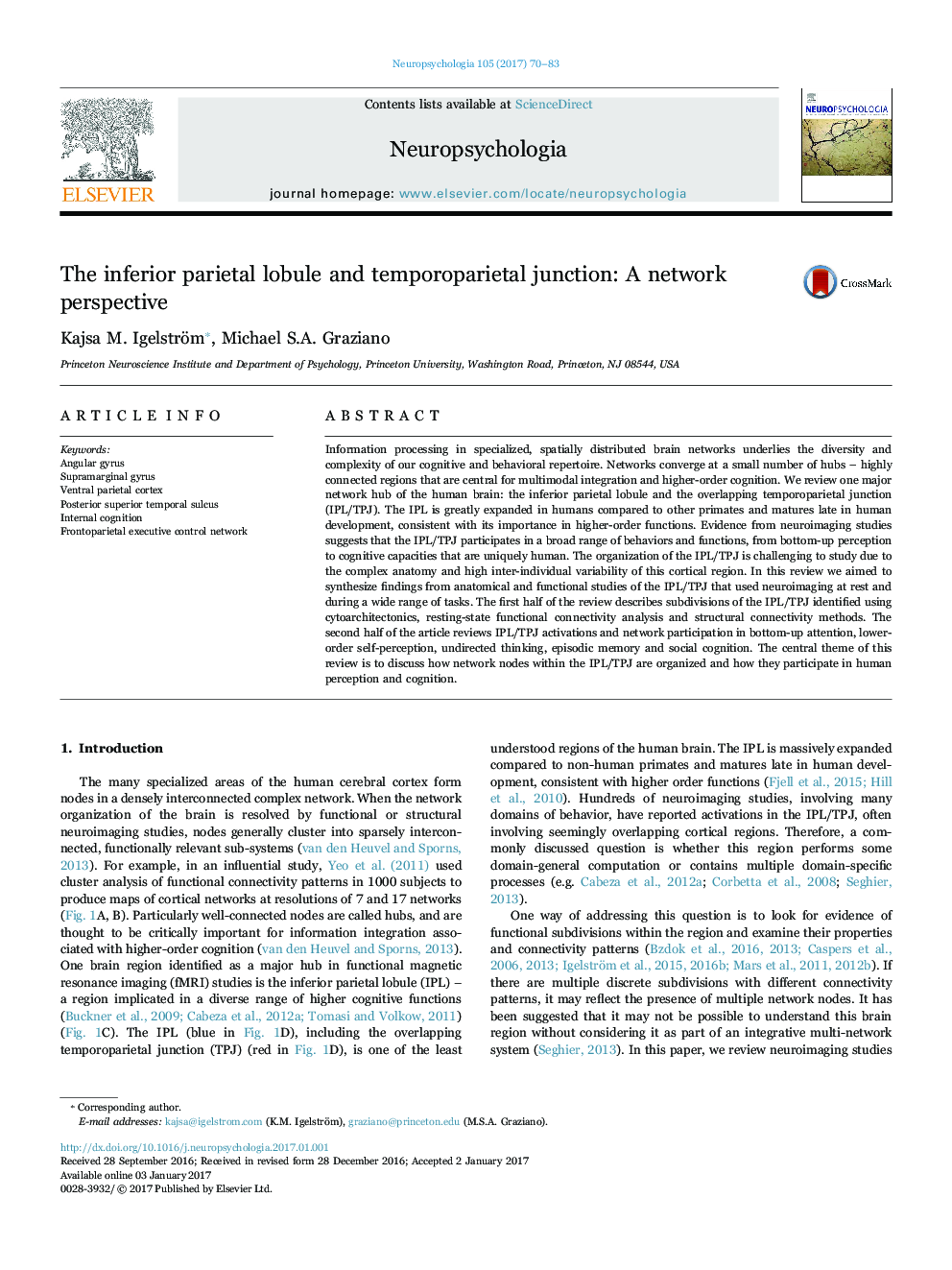| Article ID | Journal | Published Year | Pages | File Type |
|---|---|---|---|---|
| 7318338 | Neuropsychologia | 2017 | 14 Pages |
Abstract
Information processing in specialized, spatially distributed brain networks underlies the diversity and complexity of our cognitive and behavioral repertoire. Networks converge at a small number of hubs - highly connected regions that are central for multimodal integration and higher-order cognition. We review one major network hub of the human brain: the inferior parietal lobule and the overlapping temporoparietal junction (IPL/TPJ). The IPL is greatly expanded in humans compared to other primates and matures late in human development, consistent with its importance in higher-order functions. Evidence from neuroimaging studies suggests that the IPL/TPJ participates in a broad range of behaviors and functions, from bottom-up perception to cognitive capacities that are uniquely human. The organization of the IPL/TPJ is challenging to study due to the complex anatomy and high inter-individual variability of this cortical region. In this review we aimed to synthesize findings from anatomical and functional studies of the IPL/TPJ that used neuroimaging at rest and during a wide range of tasks. The first half of the review describes subdivisions of the IPL/TPJ identified using cytoarchitectonics, resting-state functional connectivity analysis and structural connectivity methods. The second half of the article reviews IPL/TPJ activations and network participation in bottom-up attention, lower-order self-perception, undirected thinking, episodic memory and social cognition. The central theme of this review is to discuss how network nodes within the IPL/TPJ are organized and how they participate in human perception and cognition.
Related Topics
Life Sciences
Neuroscience
Behavioral Neuroscience
Authors
Kajsa M. Igelström, Michael S.A. Graziano,
